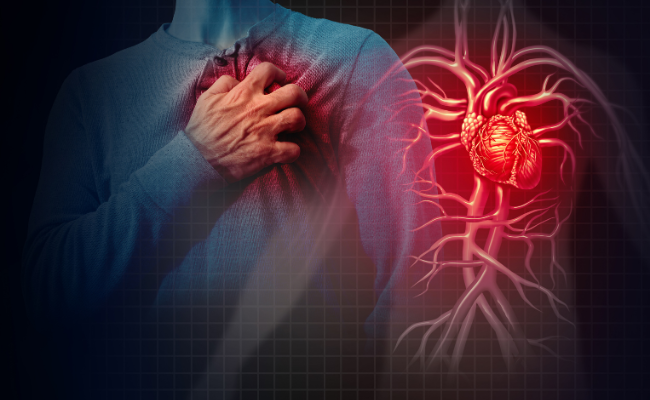What to do incase of First Aid For Heart Attack?
- October 18, 2023
- No Comments

What is a Heart Attack?
A heart attack, medically termed a myocardial infarction, occurs when blood flow to a section of the heart muscle is obstructed, often due to a blood clot or the accumulation of plaque in the coronary arteries. This blockage leads to a deprivation of oxygen and nutrients, resulting in damage or fatality to that portion of the heart.
Recognizing the signs of a heart attack and promptly administering first aid is imperative. The severe threat posed by a myocardial infarction arises from inadequate blood flow to the heart muscle, typically caused by blockages in the heart's arteries.
Without swift restoration of blood flow, the affected heart muscle undergoes deterioration, potentially causing permanent damage or even death. Urgent intervention is paramount to prevent irreversible harm, emphasizing the critical importance of immediate action in the face of a heart attack.
Why Heart Attack occurs?
Prompt first aid for a heart attack is crucial because it can help minimize the damage to the heart muscle and increase the likelihood of survival. Every minute counts during a heart attack, and quick action can make a significant difference in the outcome. By providing immediate assistance, you can help maintain blood flow to the heart, preventing further damage until professional medical help arrives.
How can we identify Heart Attacks?
Recognizing Signs:
- Chest Pain or Discomfort: Commonly, it feels like pressure, tightness, or pain in the chest, possibly extending to arms, neck, jaw, back, or stomach.
- Shortness of Breath: Difficulty breathing can indicate a heart attack.
- Other Symptoms: Watch for cold sweats, nausea, lightheadedness, and anxiety.
Seek Emergency Help:
- Dial emergency services promptly (e.g., 911). Provide your location and a brief situation description.
- Even if unsure, seek professional help for any potential heart attack.
Administer Aspirin:
- If the person isn't aspirin-allergic, have them chew one adult aspirin (325 mg) or four baby aspirins (81 mg each). Aspirin aids blood thinning and improves blood flow.
Perform CPR (Cardiopulmonary Resuscitation):
- If unresponsive and not breathing normally, start CPR.
- Compress the chest hard and fast (100-120 compressions per minute).
- If trained, combine chest compressions with rescue breaths (mouth-to-mouth resuscitation).
Treatment Solution:
The primary goal of first aid for a heart attack is to maintain blood flow to the heart until professional medical help arrives. The steps outlined above are crucial components of the initial response, but it's important to note that only trained medical professionals can provide definitive treatment for a heart attack.
Medical Intervention:
- Emergency medical services will administer medications such as nitroglycerin to help widen the coronary arteries, improving blood flow to the heart.
- Thrombolytic drugs may be given to dissolve blood clots.
- Aspirin is usually continued or administered if it hasn't been taken already.
Angioplasty and Stent Placement:
- In the hospital, a procedure called angioplasty may be performed. This involves inflating a balloon within the blocked artery to widen it, and a stent may be placed to keep the artery open.
Bypass Surgery:
- In severe cases, coronary artery bypass grafting (CABG) surgery might be necessary. This involves using blood vessels from another part of the body to bypass the blocked arteries, restoring blood flow to the heart.
Benefit Points:
- Time is Critical: Acting quickly is paramount during a heart attack. Quick administration of first aid can minimize damage to the heart muscle and improve the chances of a positive outcome.
- Increased Survival Rates: Studies consistently show that individuals who receive prompt first aid for a heart attack have better survival rates and are more likely to recover without significant complications.
- Prevents Further Complications: First aid measures such as chewing aspirin and initiating CPR help maintain blood flow, preventing further complications like cardiac arrest.
- Supports Medical Treatment: First aid is not a substitute for professional medical care, but it serves as a critical bridge until medical professionals can take over. It supports the effectiveness of subsequent medical interventions.
- Empowerment Through Training: Knowing what to do in case of a heart attack empowers individuals to take immediate action. Basic first aid and CPR training can be invaluable in emergency situations.
- Reduces Long-Term Consequences: Swift intervention not only increases immediate survival rates but also contributes to minimizing long-term damage to the heart, which can result in a better quality of life for the individual post-recovery.
Comments (0)